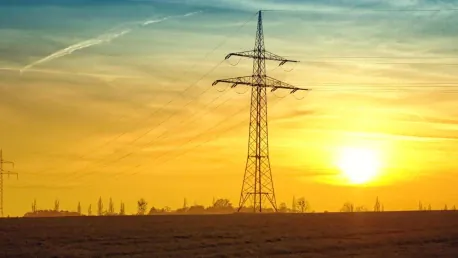The urgent need to improve rural energy efficiency cannot be overstated, especially when we consider the stark disparities that exist between rural and urban areas. Rural households have long been overlooked and underserved by successive government energy efficiency schemes, leading to unique challenges in energy costs and efficiency. As the government prepares to introduce the Warm Homes Plan, it is crucial to address these issues with tailored solutions that consider the specific needs of rural homes.
The Rural-Urban Divide in Energy Efficiency
Disparities in Housing Stock
Older rural homes tend to be significantly less energy efficient than their urban counterparts, often falling three energy efficiency bands lower than modern properties. This inefficiency is particularly pronounced in rural owner-occupied homes, which rank the lowest in energy efficiency across different housing tenures. The outdated and poorly insulated nature of many rural homes means they require more energy to heat, resulting in higher energy consumption and expenses. Targeted interventions are essential to bridge this energy efficiency gap and bring rural properties up to contemporary standards.
Effective energy efficiency measures must recognize that rural homes require more substantial retrofitting efforts compared to urban residences. The construction style, age, and often isolated locations of rural homes present unique challenges that standard energy efficiency schemes fail to address. By focusing on these specific conditions, policymakers can design more effective programs that provide rural homeowners with the support they need to improve their properties’ energy efficiency. Implementing these strategies will not only reduce energy consumption but also contribute significantly to achieving broader climate and energy goals.
Financial Impact on Rural Households
The financial burden of energy costs on rural households is another critical factor that needs immediate attention. Rural homeowners, on average, spend more on energy than their urban counterparts, perpetuating a cycle of economic disadvantage. High energy costs are often a result of inefficient heating systems and poor insulation, common issues in older rural homes. Addressing this financial disparity is crucial for creating equitable energy solutions that alleviate the economic strain on rural households.
To tackle this issue, the Warm Homes Plan must include measures that specifically target the financial challenges faced by rural homeowners. This could include grants and subsidies for insulation and energy-efficient heating systems, as well as targeted support for the most vulnerable households. By reducing the energy expenses of rural residents, these measures would not only improve their quality of life but also help in achieving broader energy efficiency and sustainability goals. Providing equitable access to energy efficiency improvements is essential in ensuring that rural households do not continue to bear a disproportionate share of the energy cost burden.
Challenges for Off-Gas Grid Homes
Lack of Access to National Schemes
One of the most pressing issues facing rural households is the lack of access to national energy efficiency schemes, particularly for the 1.4 million homes that are off the gas grid. These homes, including those serviced by Calor, have been left behind by schemes not designed to address their specific needs. The complex and costly nature of delivering energy solutions to these homes often renders them ineligible or inadequately served by existing national programs. This systemic exclusion poses a significant barrier to improving the energy efficiency of off-grid rural homes.
To remedy this, national energy schemes must be adapted to cater to the unique requirements of off-gas grid homes. This could involve developing specialized initiatives that account for the logistical and technical challenges of servicing rural areas. By tailoring these programs, the government can ensure that all households, regardless of their location, have access to the support needed to enhance their energy efficiency. Inclusion of off-gas grid homes in national energy efficiency schemes is imperative for an equitable approach to reducing energy consumption and costs across the board.
Innovations in Low-Carbon Heating
Innovative low-carbon heating solutions are crucial for rural homes that face significant technical and financial challenges in improving their energy efficiency. Calor’s introduction of BioLPG, a Renewable Liquid Gas (RLG), in 2018 presents a viable option for low-carbon heating in rural areas. BioLPG serves as a ‘drop-in solution,’ making it feasible for homes currently heated by LPG to transition to renewable energy sources without extensive modifications. However, government schemes have yet to support RLGs to the same extent as they do other renewable options like hydrogen and sustainable aviation fuel.
Expanding the recognition and support of BioLPG within governmental schemes is a necessary step to ensure that rural homes are not excluded from the transition to net zero. The omission of RLGs from current policies limits the potential for these homes to adopt more sustainable heating methods. A comprehensive approach should include a variety of low-carbon solutions tailored to the diverse needs of rural properties. This would not only enhance the overall energy efficiency but also contribute to the broader goal of reducing the carbon footprint of homes nationwide.
Government Funding and Policy Recommendations
The Warm Homes Plan
The government’s commitment to investing £13.2 billion in energy efficiency improvements marks a positive step towards addressing energy inefficiency. However, this amount has faced criticism for being insufficiently ambitious to meet the stringent carbon budgets laid out for the coming years. The upcoming Warm Homes Plan needs to place considerable emphasis on the least energy-efficient homes, many of which are located in rural areas. These properties require more extensive and costly interventions to bring them up to modern efficiency standards, necessitating focused investment and resources.
For the Warm Homes Plan to fulfill its potential, it must prioritize rural homes with poor energy efficiency ratings. This includes allocating resources to retrofit these properties with state-of-the-art insulation and heating systems. By doing so, the plan can make a significant impact on reducing overall energy consumption and carbon emissions. Additionally, targeted funding can help alleviate the financial burden on rural homeowners, ensuring they are not left behind in the national push for energy efficiency. A strategic focus on rural areas will bring equitable energy solutions across the country, fostering sustainable development.
Proposals for Effective Implementation
Improving existing government energy efficiency schemes is essential for achieving meaningful progress. Recommendations include ending competitive funding for local authorities, a key component of the Great British Insulation Scheme (GBIS), Warm Homes: Local Grant (WHLG), and Home Upgrade Grant (HUG). The current competitive bidding process often limits access to crucial funding for many rural areas, exacerbating energy inefficiency and financial challenges. A more inclusive and less competitive funding model would ensure that all regions, particularly underserved rural communities, receive the necessary support.
Reversing certain prohibitions within the Energy Company Obligation (ECO) 4 scheme is also critical for equitable energy policy. The current restrictions prevent the replacement or repair of old LPG or oil boilers in off-gas grid homes, creating an unfair burden on rural households. Allowing these replacements would be a cost-effective method to reduce emissions and lower energy bills. Since LPG boilers can operate using Renewable Liquid Gases as the supply increases, this approach remains compatible with net zero targets. Adjusting these policies would enable rural homes to access the same benefits as urban residences, promoting a fairer transition to sustainable energy solutions.
Support for Owner-Occupiers
Financial Incentives and Loan Models
To further aid rural households in improving their energy efficiency, the article suggests offering financial incentives and loan models aimed at owner-occupiers or the ‘able-to-pay’ market. Previous schemes, such as the Green Deal, have faced barriers, but these can serve as valuable learning experiences. Implementing critical consumer protections and incentives, including low or zero percent interest loans, can make these financial products more appealing to households, especially those struggling with rising living costs.
The success of such loan models hinges on addressing the key issues that plagued previous programs. Transparent and straightforward terms, coupled with robust consumer protection measures, can build trust and encourage participation. Additionally, making the loan process seamless and accessible will be crucial for maximizing uptake. These financial mechanisms can empower homeowners to invest in energy-efficient upgrades, ultimately reducing energy consumption and costs while moving towards national sustainability goals.
Diverse Technological Solutions
The pressing need to enhance energy efficiency in rural areas cannot be emphasized enough, particularly when we reflect on the significant differences between rural and urban regions. For years, rural households have been neglected and poorly served by various government energy efficiency initiatives. This neglect has resulted in unique challenges regarding energy costs and efficiency that these communities face. As the government prepares to introduce the Warm Homes Plan, it is imperative to tackle these issues with solutions specifically designed for rural homes. Addressing the energy needs of rural households with tailor-made strategies that consider their distinctive circumstances is essential. Only by doing so can we ensure that rural areas receive the attention and support they need to achieve energy efficiency and reduce costs. Now is the time to bridge the gap and provide equitable energy solutions for all, regardless of their geographic location.









